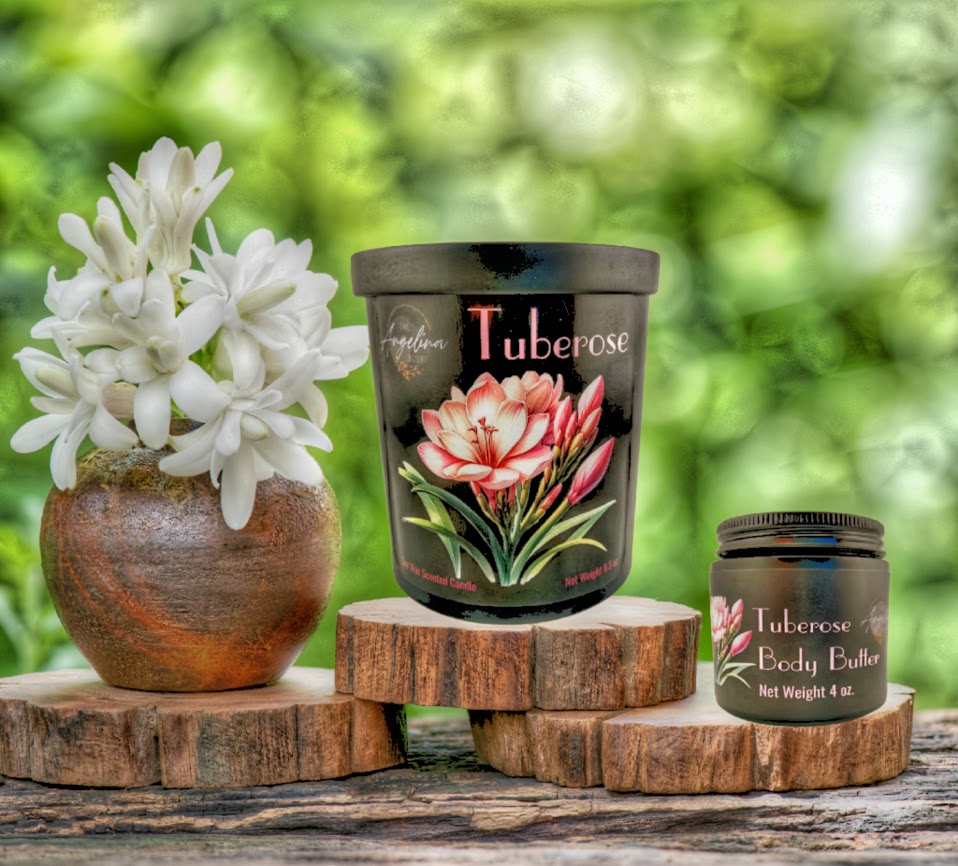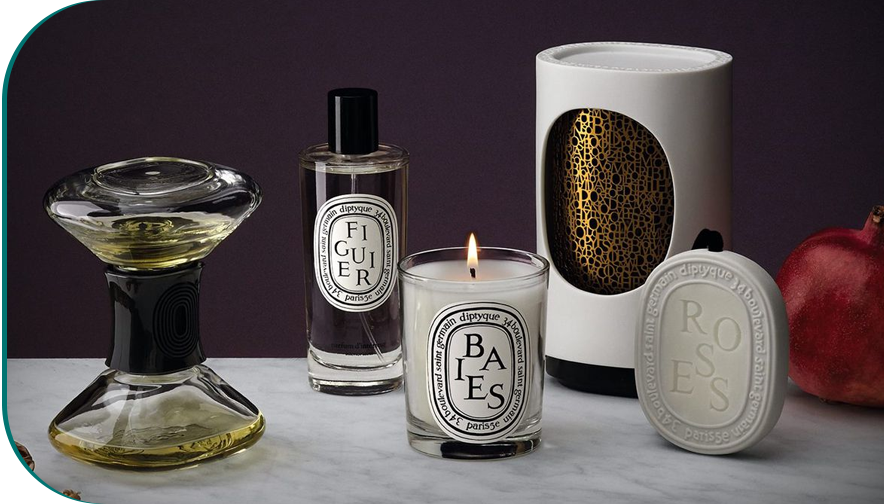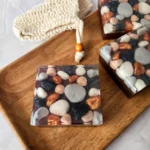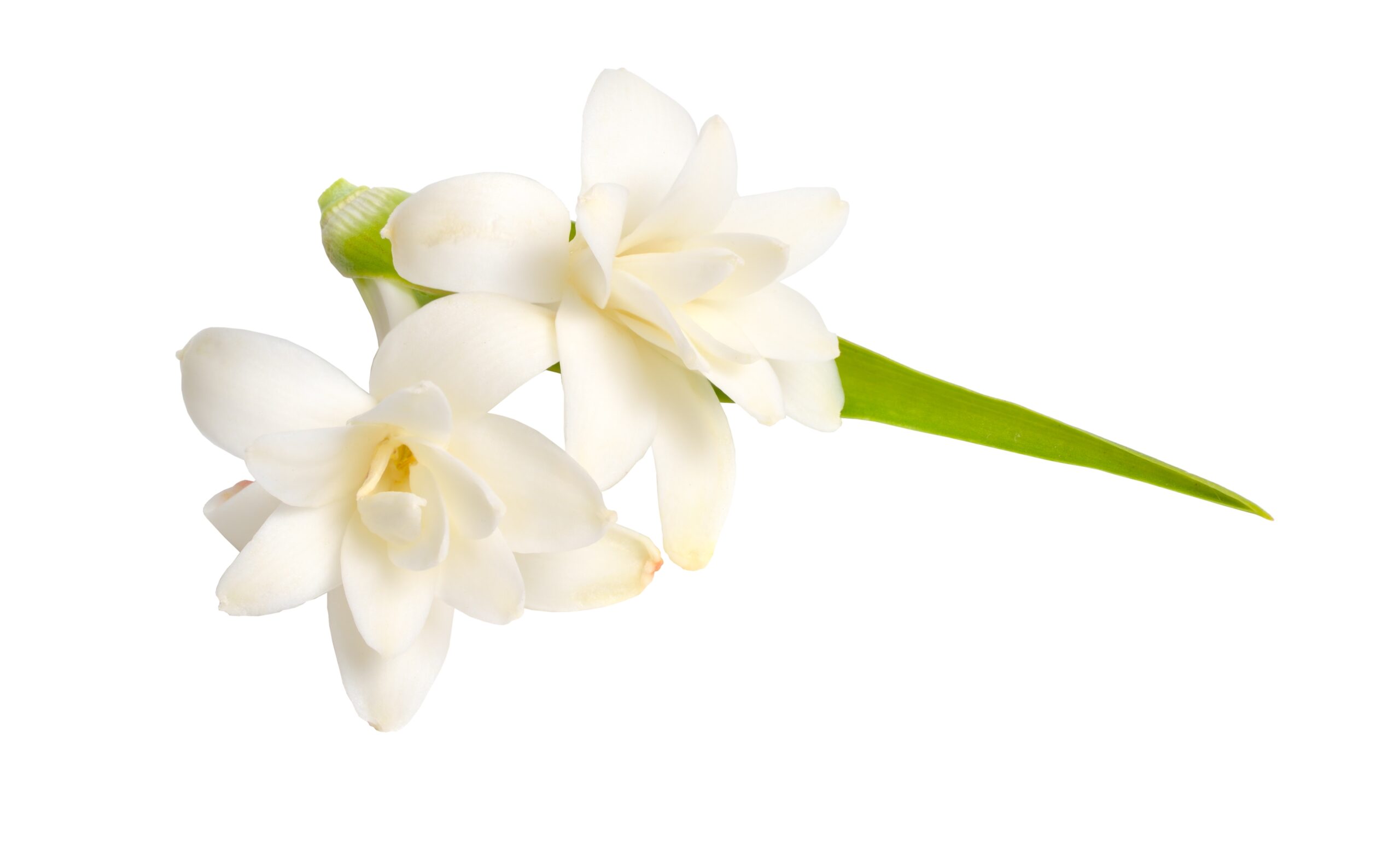- July 10, 2024
Tuberose
Scents & Scent’s Ability – Tuberose
A rose is a rose, unless it’s a tuberose, then it’s not. Today, we launch our new scented candles, tealights and natural body butter perfumed with the voluptuous aroma of tuberose. Despite it’s name, tuberose is not related to the rose; it is an agave, a succulent cactus in disguise, a botanical chameleon that captivates the senses. Tuberose (pronounced “tuber-ose”) derives its name from the bulb-like stem that grows beneath the earth, like a secret hidden from the sun. Agave amica, the Latin name for this plant, grows three to four feet high, and in the summer, produces clusters of blooms that open at night, calling to the moon and seducing the stars.
Known to the Aztecs as “omixochitl,” the tuberose, with its waxy, white blossoms, was a flower of the gods, a symbol of the divine. Tuberose was a revered blossom, used in ceremonies and rituals, adorning crowns, worn as garlands, and offered to the gods themselves. By the time the Europeans arrived, they recognized the beauty of the flower’s fragrance, and were captivated by its charms. They brought the plant back to Europe, where it quickly became a favorite among perfumers.
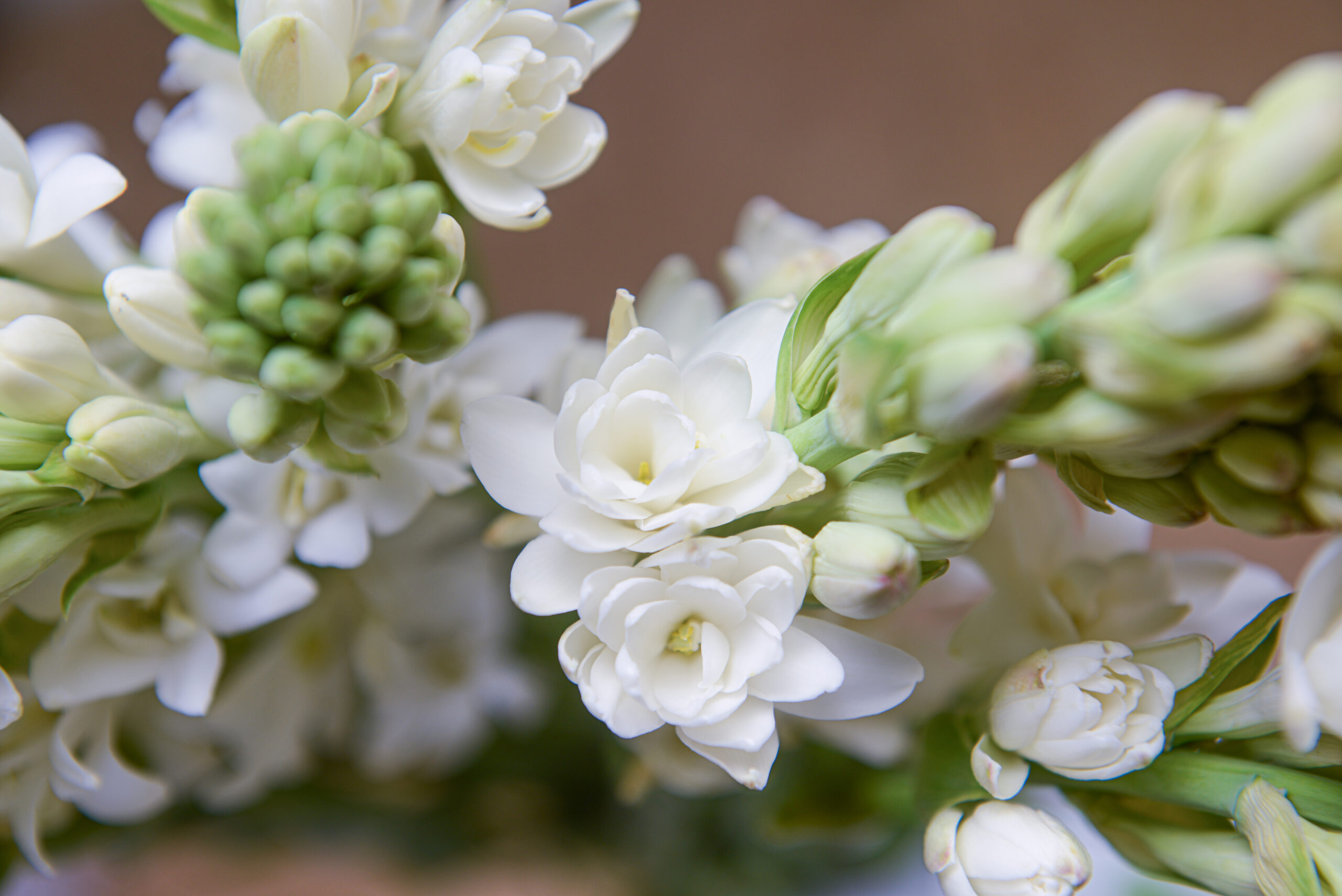
According to legend, King Louis XIV bathed only three times in his life due to his (and others’) belief that bathing spreads disease. During the time of King Louis’ reign, Versailles was a place of great beauty and luxury, but also of great stink. The palace was a maze of chambers, each with its own unique bouquet of foulness. The lack of proper plumbing and the infrequent bathing habits of its residents did little to improve the situation. Amidst the stink, olfactory hope lie within the perfume of flowers. Louis XIV, engulfed the palace grounds in tuberoses and other flowers, with the expectation that they would overpower the stench with their creamy, rich aroma. King Louis XIV was nick-named (among other things), as the sweetest smelling king of all.
The cultivation of the tuberose subsequently spread all over the world, where it thrives in warm climates, in India and Pakistan, as well as other parts of the globe, and is cherished for it’s fragrance and decorative blossoms. Today, the tuberose is only cultivated and no longer grows wild.
Tuberoses are cultivated by planting their bulbs in well-drained soil, ideally in a location that basks in the golden rays of the sun for about 6-8 hours during the day. The bulbs are typically planted in early spring, after the last frost has kissed the earth goodbye, but in cooler climates, they can be coaxed to life indoors, like a secret kept from the world, and then transferred outside once the night temperature is warm enough. During the growing season, they are pampered every four to six weeks with nutrients, or by mixing well-rotted compost or manure with the soil at planting time, like a feast for their roots.
The plant produces clusters of white or pastel blooms on long spikes, like a bouquet of desire, which are used for cut flowers, making garlands, and extracting essential oil which is the essence of temptation itself. While the typical tuberose flowers are white, they also grow in various pastel shades of pink, yellow and other hues. Tuberose is one of the most costly essential and/or absolute oils to manufacture, requiring almost 2000 pounds of the flower’s blossom to produce just a half pound of essential oil.
The process of making essential oil from tuberose flowers is like a delicate dance between the flower and the alchemist’s hands. It started by gathering the flowers, which are then placed on a bed of odorless oil, such as coconut or palm oil. This is known as the enfleurage method, where the oil slowly absorbs the essence of the tuberose over several days, leaving behind the pure, unadulterated essence of tuberose. This method was used to extract the flowers’ essence until around the 1930s, when new methods of extracting were introduced using volatile solvents, resulting in a higher yield and a more economical process.
“The tuberose, with her silvery light, that in the gardens of Malay is called the mistress of the night. So, like a bride scented and bright, she comes out when the sun’s away.” – Thomas Moore
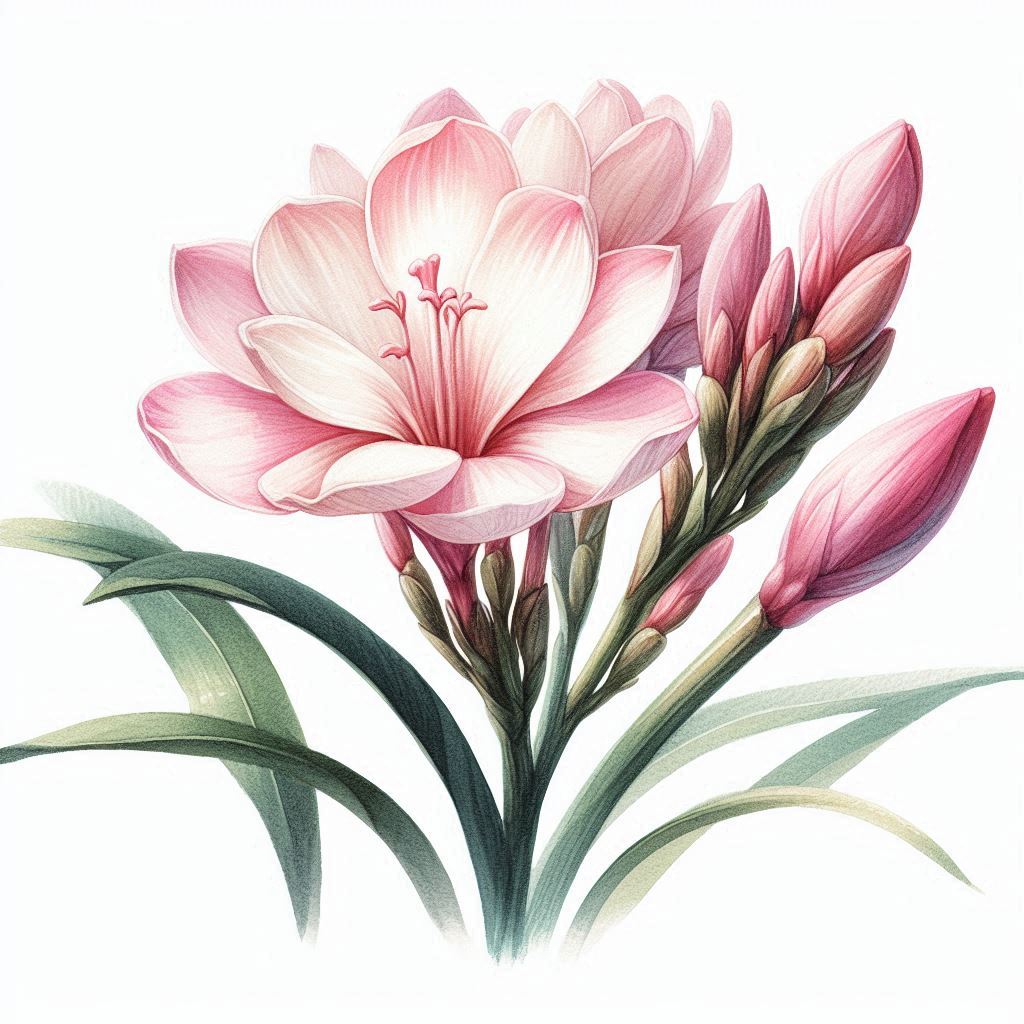
Tuberose, with its green, fruity, and nutty undertones, is also known as the “carnal flower” due to its provocative scent profile. Tuberose has been described as having a sensual, animal aspect that evokes warmth and sensuality. Its essential oil is said to have aphrodisiac qualities as well. The flower has long been a favorite staple in perfumery. Master perfumer Roja Dove has called it the “harlot of perfumery,” given its sensual, pleasure-seeking scent. Some notable perfumes that feature tuberose include Poison by Dior, Gabrielle Essence by Chanel, and Fracas, by Robert Piguet.
In aromatherapy, the tuberose is said to promote confidence, self-assertiveness, and has aphrodisiac qualities that can ignite a lackadaisical libido. It has been used to calm nerves, quell anger or depression, and imbue joy, peace, and harmony. Therapeutic qualities include the ability to stave off nausea and treat spasmodic coughs, muscle tension and nasal congestion.
Because of the flower’s anti-fungal and anti-bacterial properties, tuberose also helps treat skin problems such as dry, irritated skin and acne. Other benefits tuberose offers to the skin is that it smooths fine lines and wrinkles, and keeps skin hydrated. It’s also great for cracked heels and other issues associated with dry skin.
And the jessamine faint, and the sweet tuberose, The sweetest flower for scent that blows. – Percy Bysshe Shelley
We craft our tuberose candles and tea lights with 100% organic soy wax, and perfume them with premium-grade fragrance oil. For this batch, we used a vivid pink to color the wax. They are poured into matte black jars with a glossy interior, topped with a black lid, like a secret, hidden treasure waiting to be discovered. These candles have a strong “scent throw,” even when not lit, like the tuberose herself, whispering a siren’s call of promises of pleasure and desire.
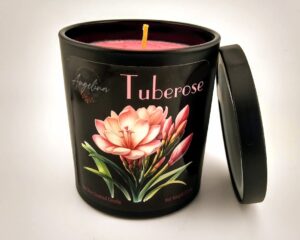
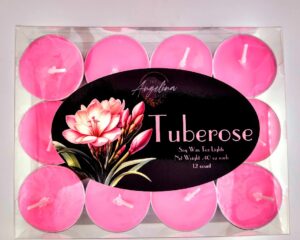
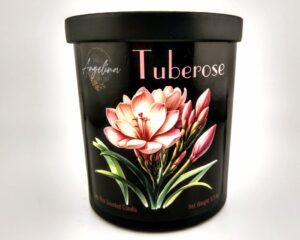
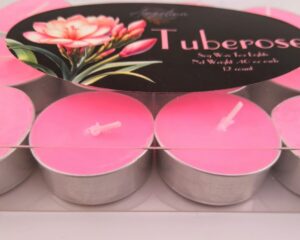
The Angelina Store is currently offering a natural, luxury tuberose body butter, an emulsified lotion which contains 100% pure tuberose essential oil. We make our emulsified body butter with organic mango butter and coconut oil, adding vitamin E and borage oils for additional hydrating power.
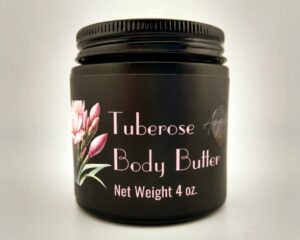
The tuberose is a flower of great beauty and great power, the queen of the senses. Be sure to check out our scented candles, tealights and natural body butter perfumed with the voluptuous aroma of tuberose, and let let the perfume take you to the edge of ecstasy.
